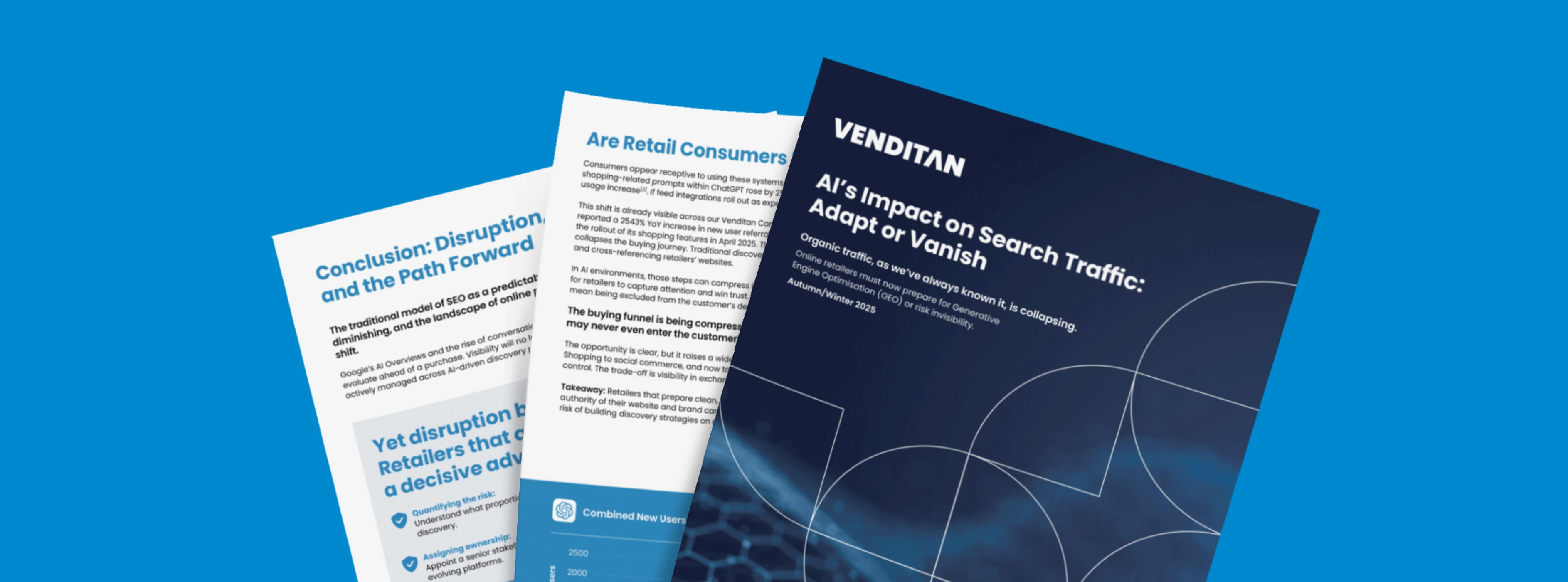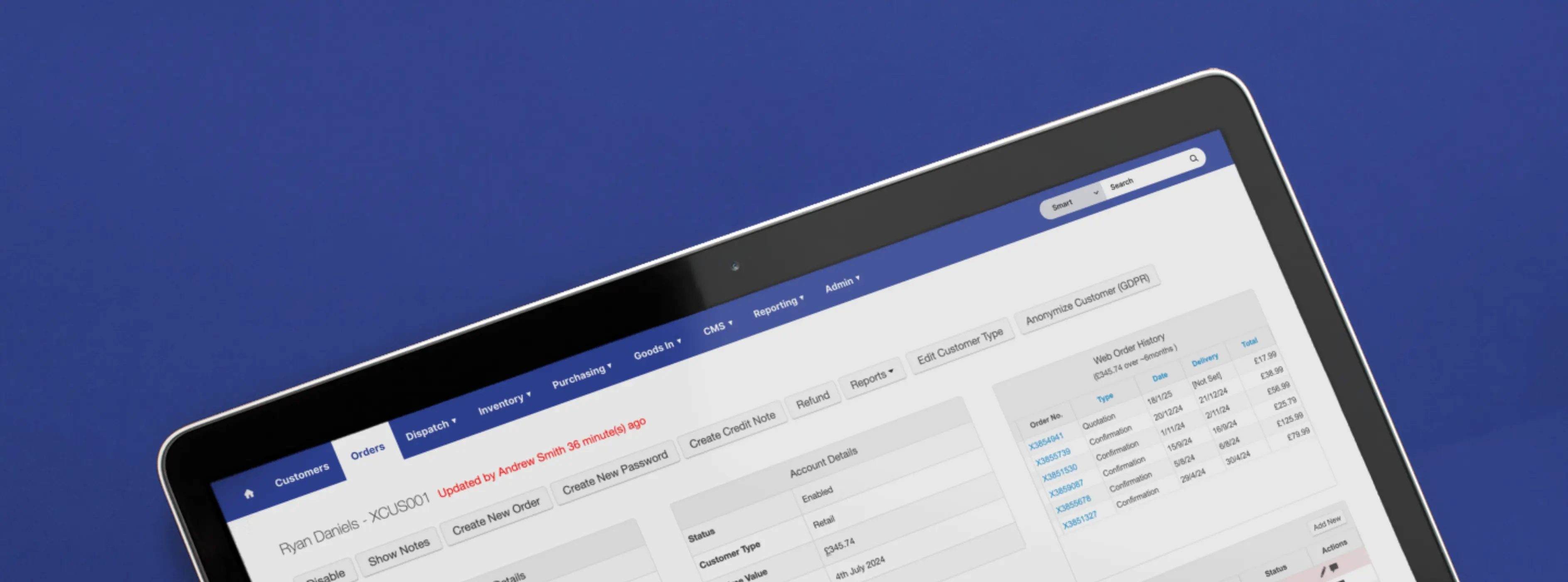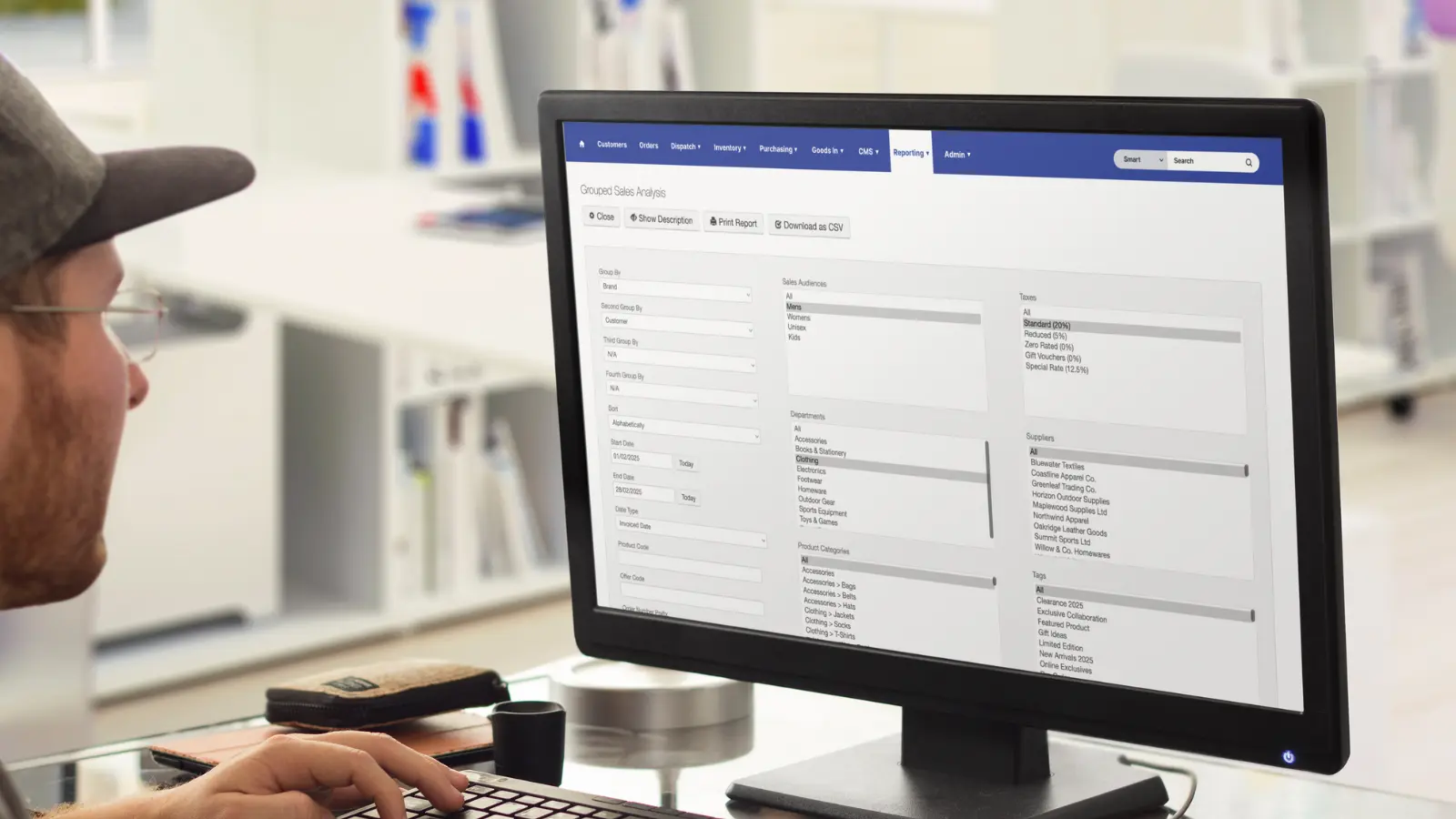If a customer can’t use your website, you’ve already lost the sale… and possibly more.
Website accessibility means designing and building digital experiences that everyone can use, regardless of ability.
In an eCommerce context, that means ensuring that customers with visual, motor, cognitive, or auditory impairments can browse, search, add to the basket, and check out without barriers.
The latest standards from the Web Content Accessibility Guidelines (WCAG) continue to evolve, and the incoming European Accessibility Act will bring new obligations for UK retailers who sell into the EU.
So, staying informed is essential in staying compliant and competitive.
In this article, we will cover:
Why accessibility matters in eCommerce
If you’re not building for accessibility, you’re limiting your audience, damaging your SEO, and opening yourself up to legal risk.
Here’s the business case, broken down.
Inclusivity: Reaching every customer
There are now approximately 16.1 million disabled people in the UK, and the estimated spending power of families with at least 1 disabled person is estimated at £274 billion per year.
That doesn’t include potential customers experiencing temporary or situational issues, like browsing on a cracked phone screen, or trying to buy something one-handed while juggling a toddler.
An accessible website ensures these customers can use your site without friction. It’s a basic requirement if you want to serve the full market. If your site excludes people, they will shop elsewhere and won’t be shy about it.
User Experience: Better for everyone
Accessibility features improve usability across the board. The standards we will explore later in this article not only benefit users with disabilities, but they also drive up the quality of your website experience for all visitors.
When accessibility is prioritised during design and development, the outcome is a cleaner, faster, more intuitive site. That translates into higher engagement, longer dwell times, and stronger conversion rates regardless of who’s browsing.
SEO: Search engines and screen readers like the same things
Semrush and AccessibilityChecker.org jointly analysed over 800 websites and found that sites with better accessibility scores consistently had better organic search rankings.
That’s because many accessibility best practices also align with technical SEO. Semantic HTML, alt text for images, descriptive page titles, and logical content structure are all things search engines value.
Commercial Performance: More reach, less friction
An inaccessible website quietly leaks revenue. If users cannot complete a checkout flow or navigate a promotions page, you are leaving money on the table. Worse still, you may never know, because many users will not complain, they’ll just leave.
Don’t just take our word for it. The 2019 Click-Away Pound Report found that inaccessible websites result in 4 million customers abandoning UK retail sites each year, with an estimated revenue loss of £17.1 billion.
Legal Risk: Compliance is tightening
In the UK, the Equality Act 2010 requires businesses to make ‘reasonable adjustments’ so disabled users are not disadvantaged. In practice, that means your website needs to be accessible.
Legal cases over digital accessibility are on the rise. Public sector websites must already meet strict WCAG standards, and private sector expectations are catching up fast, especially with the European Accessibility Act coming into force in June 2025 for any UK business selling into EU markets.
Failing to act is not only a reputational risk; It may soon become a legal liability.
Understanding WCAG 2.1 and 2.2
(TLDR: WCAG 2.1 sets out 78 criteria for making websites accessible. WCAG 2.2 adds another 9. Together, they define what ‘accessible’ means in practice, from page layout and navigation to forms and visual indicators.)
The Web Content Accessibility Guidelines (WCAG) 2.1 is an internationally recognised set of recommendations designed to make websites accessible to people with disabilities.
Developed by the World Wide Web Consortium (W3C), WCAG 2.1 builds on earlier versions by addressing a wider range of accessibility barriers, especially for mobile users and those with cognitive or learning disabilities.
Is it a legal requirement?
No. In the UK, WCAG 2.1 itself is not legislation for private sector websites, but it serves as the de facto standard for accessibility compliance.
However, it may become a legal requirement in the future.
So, while there’s no explicit legal mandate to meet WCAG, the Equality Act 2010 expects reasonable adjustments, and WCAG is the recognised benchmark for demonstrating compliance.
Scope of WCAG 2.1
WCAG 2.1 includes 78 success criteria under four core principles, often summarised as P.O.U.R.
Perceivable
Information and user interface components must be presented so users can perceive them.
Example: Missing Alt Text on Product Images
A user browsing with a screen reader visits a product page. The image of the product shows clearly on screen, but there is no alternative (alt) text. The screen reader announces “image” or skips over it entirely.
Operable
Users must be able to operate the interface.
Example: Inaccessible Navigation with Keyboard
A customer using a keyboard (instead of a mouse) tries to use the main menu to browse categories. The menu items are not focusable via the tab key, or submenus do not expand.
Understandable
Information and operation of the interface must be clear and predictable.
Example: Vague Error Messages on Checkout Forms
A user mistypes their email address at checkout. The error message simply says “Invalid input” without pointing to the field or suggesting how to fix it.
Robust
Content must be robust enough to work with current and future technologies, including assistive tools.
Example: Custom UI Elements Not Recognised by Assistive Tech
An eCommerce site uses a custom-built dropdown for selecting product variations (e.g. size or colour). Visually it works fine, but it’s not built using proper semantic HTML or ARIA roles.
What is WCAG 2.2?
WCAG 2.2 is an update to the WCAG 2.1 guidelines, published in December 2023. It adds new success criteria to improve accessibility, especially addressing areas like cognitive disabilities, mobile accessibility, and reducing user errors.
Additional criteria in WCAG 2.2 include:
- Focus Appearance (Minimum and Enhanced): Stricter requirements on visible focus indicators to help keyboard and assistive tech users track where they are on a page.
- Dragging Movements: Ensuring content that requires dragging can be operated by simpler actions.
- Accessible Authentication: Offering alternatives to cognitive tests like CAPTCHAs, which can be barriers for many users.
- Visible Controls: Making interactive elements visible to reduce confusion.
- Character Key Shortcuts: Allowing users to disable or remap keyboard shortcuts to avoid accidental actions.
These additions brought the total number of success criteria closer to 90 and represent the latest best practice in web accessibility.
Who holds the responsibility to keep your website accessible?
Legal responsibility for website accessibility rests with the retailer or business that owns and operates the website.
Reputable providers build eCommerce sites to meet WCAG standards from the outset, but maintaining ongoing compliance is ultimately the retailer’s duty. Proactive providers will offer support and guidance on accessibility maintenance. You can read more about this here.
This responsibility includes managing accessible content, performing regular maintenance, and ensuring updates do not introduce new accessibility barriers.
EU Accessibility Requirements: New Deadline June 2025
The European Accessibility Act (EAA) brings big changes for eCommerce websites selling into the EU, coming into effect on 28th June 2025.
Products and services placed on the EU market after this date must comply immediately .
From this date, any eCommerce service offered in the EU, including those based in the UK, must conform to the P.O.U.R. framework (Perceivable, Operable, Understandable, Robust) as detailed in WCAG 2.1 Level AA and EN 301 549.
As well as websites, this also includes mobile apps, online banking, transport ticketing, vending machines, and other tech goods and services.
How can we help?
Accessibility isn’t a one-off project; it’s an ongoing commitment. As the standards evolve, so should your website.
That’s where we can help, whether you are an existing Venditan client or not.
Expert Accessibility Audit
We can conduct a fresh audit of your website against the latest WCAG standards, including the new 2.2 criteria.
You’ll get a clear report highlighting areas for improvement, prioritised by impact, along with recommendations tailored to your site and platform setup.
This ensures your site remains inclusive, high-performing, and legally compliant.
DIY Evaluation Checklist
Prefer to assess your site internally? We can provide you with a practical WCAG-aligned checklist to evaluate your site yourself, helping you spot accessibility barriers before your customers do.
What you’ll gain
- A site experience that’s more usable for everyone
- Higher conversion rates and better SEO performance
- Peace of mind that your site is open to all and protected from risk
Whether you want hands-on support or just the tools to take action, we’re here to help you build an accessible eCommerce website that performs for every customer.
Get in touch with our team today to start your accessibility journey.
Our recent posts
Keep up to date with the latest news and insight from the team at Venditan
-p-2600.webp)






.webp)

%20(1).webp)
%20(1).webp)


